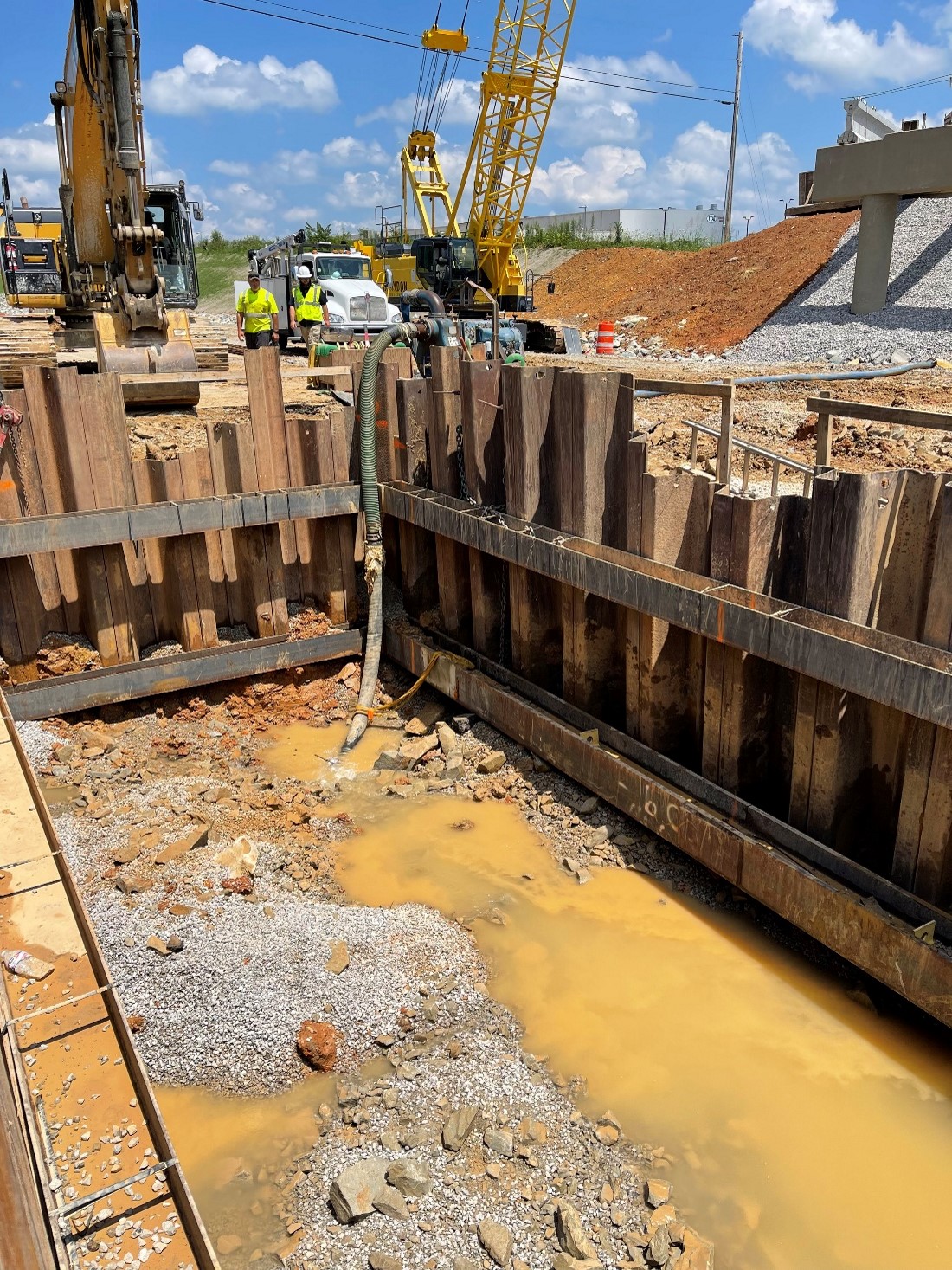A cofferdam is a structure used to retain water and allow builders to dewater construction sites. It helps to maintain a dry work site when constructing structures in waterlogged areas. They can also be used in construction sites where digging needs to be sheltered off because they are too close to roads, traffic, buildings and other structures. When excavation occurs, a cofferdam can protect other existing construction where otherwise digging could cause possible compromised integrity of nearby roads and structures.
A cofferdam is often utilized during bridge construction. Why? Well, have you ever wondered how those bridge foundations were safely dug and secured under the river or seabed with all the water surrounding the construction site? A cofferdam is put in place temporarily during construction as a wall around the water, which is pumped out once the cofferdam is secured. Once the water is pumped, the construction crew can safely dig and set the foundation piles into the ground.
Haydon Bridge also uses cofferdams when constructing bridges, roads and ramps that are close or right up against existing highways. To prevent the existing roadways from buckling, crumbling or being destroyed, a cofferdam is constructed during the excavation and digging process. That way you can protect the property surrounding the construction site, protect the public and drivers on the nearby roadways, and build a more secure structure or road system.




